News
Are you ready for TEK? – A guide to evaluating the Training, Equipment and Knowledge required for starting technical diving
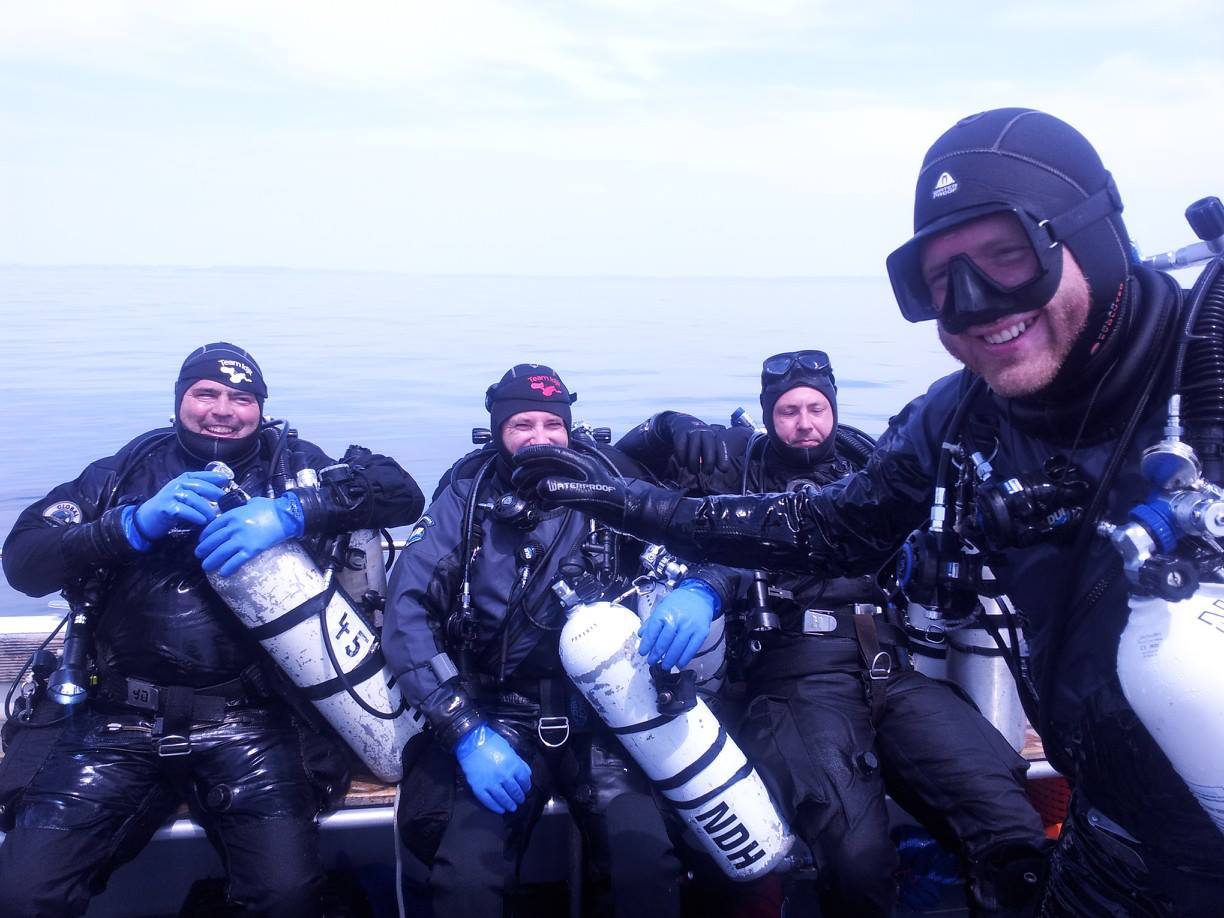
Part 1 – Training
What was once out of reach to everyone but a select few is now part of the mainstream in many sports and diving is no exception. Caves and ocean depths that were until recently accessible only by experts with a lifetime of training can now be touched by those eager amateurs prepared to invest in training and equipment that is now widely available.
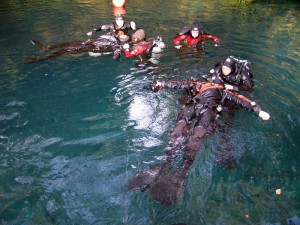 However the increased availability of this specialised training and equipment presents us with a double edged sword. On one side are those who are prepared to make a long term investment and gain the right tools to safely enjoy diving in some incredible and extreme locations not accessible to 99% of the diving community. One the other side there are divers seeking short cut training modelled on mainstream recreational courses. This often results in inadequate training, equipment and experience that can cause them to end up in situations and locations that they will realise they are ill prepared for far too late.
However the increased availability of this specialised training and equipment presents us with a double edged sword. On one side are those who are prepared to make a long term investment and gain the right tools to safely enjoy diving in some incredible and extreme locations not accessible to 99% of the diving community. One the other side there are divers seeking short cut training modelled on mainstream recreational courses. This often results in inadequate training, equipment and experience that can cause them to end up in situations and locations that they will realise they are ill prepared for far too late.
So in a series of three articles I wanted to explore the three key areas of training, equipment and knowledge (TEK) that a diver should carefully consider before starting a progression down this route.
How do you get the Training?
#1 – Do your research. Who is doing the diving you want to do and how did they get trained?
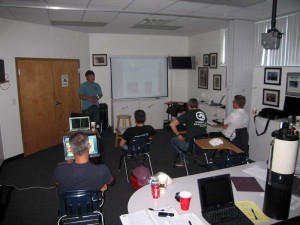 I made a number of early decisions at the start of my technical diving career based on two areas of information. I read voraciously about the sorts of diving I wanted to do. Tales of North East US deep wrecks and North Florida caves in the 80’s & 90’s led me to leading lights of those scenes and then I looked at how they gained their experience and training. Fortunately by the time I started down this route in 2008 things were a little more organised than the early days of deep wreck and cave diving! Today you can easily research the divers, agencies and instructors and find out if, what and how they are doing things appeals to you. There are huge online resources to get your grey matter going, however be aware of polarised ‘internet opinions’ as they will hold you back.
I made a number of early decisions at the start of my technical diving career based on two areas of information. I read voraciously about the sorts of diving I wanted to do. Tales of North East US deep wrecks and North Florida caves in the 80’s & 90’s led me to leading lights of those scenes and then I looked at how they gained their experience and training. Fortunately by the time I started down this route in 2008 things were a little more organised than the early days of deep wreck and cave diving! Today you can easily research the divers, agencies and instructors and find out if, what and how they are doing things appeals to you. There are huge online resources to get your grey matter going, however be aware of polarised ‘internet opinions’ as they will hold you back.
#2 – Get your basic dive skills nailed. You need to be solid before building complex skills.
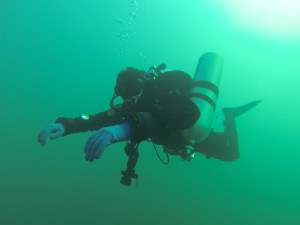 Finding a baseline of where you are today is vital before considering developing complex new skills. You may think your basic skills such as trim, buoyancy control and propulsion are pretty good (everyone’s is right?) but the reality is they probably fall short of the entry point of many technical or cave classes. During training you will be expected to remain in a flat (trim) static position in mid water (not kneeling!) and this can prove difficult even for experienced divers. A technical diver will be able to maintain trim within a 15 degree window, buoyancy with a 1m window even when task loaded such as performing a gas switch, sharing gas or manipulating a valve. Have you ever wondered why the visibility behind you is so bad? So you will also need a range of kicks designed to not disturb silt and be able to manoeuvre in a confined space. The fact is none of these basic dive skills are naturally occurring and you really need an experienced technical diver who is also an instructor to give you structured feedback and develop your basic skills. You should consider a foundational course from an agency with an established technical curriculum such as GUE fundamentals before moving on.
Finding a baseline of where you are today is vital before considering developing complex new skills. You may think your basic skills such as trim, buoyancy control and propulsion are pretty good (everyone’s is right?) but the reality is they probably fall short of the entry point of many technical or cave classes. During training you will be expected to remain in a flat (trim) static position in mid water (not kneeling!) and this can prove difficult even for experienced divers. A technical diver will be able to maintain trim within a 15 degree window, buoyancy with a 1m window even when task loaded such as performing a gas switch, sharing gas or manipulating a valve. Have you ever wondered why the visibility behind you is so bad? So you will also need a range of kicks designed to not disturb silt and be able to manoeuvre in a confined space. The fact is none of these basic dive skills are naturally occurring and you really need an experienced technical diver who is also an instructor to give you structured feedback and develop your basic skills. You should consider a foundational course from an agency with an established technical curriculum such as GUE fundamentals before moving on.
#3 – Be prepared to pay and be prepared to not pass. If you see a ‘cheap’ technical class with a 100% pass rate, run.
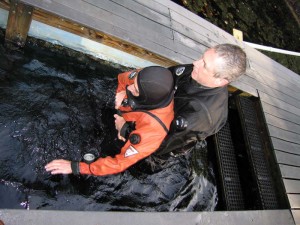 The sorts of class you are looking at are probably quite a bit more money and longer than your basic dive classes. For example most ‘normoxic’ trimix and basic cave classes are between 5-6 days and there will be a gas bill at the end of it! You may even have to travel and pay for boat costs. It can quickly add up and add to personal pressure to ‘perform’.
The sorts of class you are looking at are probably quite a bit more money and longer than your basic dive classes. For example most ‘normoxic’ trimix and basic cave classes are between 5-6 days and there will be a gas bill at the end of it! You may even have to travel and pay for boat costs. It can quickly add up and add to personal pressure to ‘perform’.
Your instructor will also fully understand the environment they are teaching you to dive in and will not accept second best. This means no matter how much you have spent they simply will not pass you if you don’t make the grade.
#4 – Make sure your instructor is an active diver. You want real experience, not training slates.
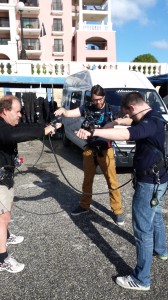 I have already mentioned the cost of training at this level. You are for the most part paying for that instructor’s experience as much you are paying for their time. A good instructor should be diving above the level that they are teaching, so they will be bringing a huge amount of personal diving experience to your class. Many instructors only teach and this brings nothing to this type of diving. The best instructors I know work hard to maintain a balance between being active divers and educators.
I have already mentioned the cost of training at this level. You are for the most part paying for that instructor’s experience as much you are paying for their time. A good instructor should be diving above the level that they are teaching, so they will be bringing a huge amount of personal diving experience to your class. Many instructors only teach and this brings nothing to this type of diving. The best instructors I know work hard to maintain a balance between being active divers and educators.
In the next part of this series I will be looking at the equipment required for technical and cave training. Are you prepared to change your entire configuration right down to your fins?
James teaches exclusively as a GUE (Global Underwater Explorers) instructor for TecLife (www.divelife.co.uk).
Gear News
Scubapro Free Octopus Promotion 2024

Free Octopus with every purchase of a SCUBAPRO regulator system
Just in time for the spring season, divers can save money with the FREE OCTOPUS SPRING PROMOTION! Until July 31st SCUBAPRO offers an Octopus for free
with every purchase of a regulator system!
Get a free S270 OCTOPUS with purchase of these combinations:
MK25 EVO or MK19 EVO with A700
MK25 EVO or MK19 EVO with S620Ti
MK25 EVO or MK19 EVO with D420
MK25 EVO Din mit S620Ti-X
Get a free R105 OCTOPUS with purchase of the following combinations:
MK25 EVO or MK19 EVO with G260
MK25 EVO or MK17 EVO with S600
SCUBAPRO offers a 30-year first owner warranty on all regulators, with a revision period of two years or 100 dives. All SCUBAPRO regulators are of course certified according to the new European test standard EN250-2014.
Available at participating SCUBAPRO dealers. Promotion may not be available in all regions. Find an authorized SCUBAPRO Dealer at scubapro.com.
More information available on www.scubapro.com.
Blogs
Northern Red Sea Reefs and Wrecks Trip Report, Part 3: The Mighty Thistlegorm

Jake Davies boards Ghazala Explorer for an unforgettable Red Sea diving experience…
Overnight, the wind picked up, making the planned morning dive a bit bumpy on the Zodiacs to the drop point on Thomas Reef. There, we would dive along the reef before descending through the canyon and then passing under the arch before ascending the wall with a gentle drift. The site provided great encounters with more pelagic species, including shoals of large barracuda, tuna, and bigeye trevally.
Once back on the boat, it was time to get everything tied down again as we would head back south. This time, with the wind behind us, heading to Ras Mohammed to dive Jackfish Alley for another great gentle drift wall dive before then heading up the coast towards the Gulf of Suez to moor up at the wreck of the Thistlegorm. This being the highlight wreck dive of the trip and for many onboard, including myself, it was the first time diving this iconic wreck. I had heard so much about the wreck from friends, and globally, this is a must on any diver’s list. Fortunately for us, there was only one other boat at the site, which was a rarity. A great briefing was delivered by Ahmed, who provided a detailed background about the wreck’s history along with all the required safety information as the currents and visibility at the site can be variable.

Kitting up, there was a lot of excitement on deck before entering the water and heading down the shoreline. Descending to the wreck, there was a light northerly current which reduced the visibility, making it feel more like the conditions that can be found off the Welsh coast. At 10m from the bottom, the outline of the wreck appeared as we reached the area of the wreck which had been bombed, as our mooring line was attached to part of the propeller shaft. Arriving on deck, instantly everywhere you looked there were many of the supplies which the ship was carrying, including Bren Carrier tanks and projectiles that instantly stood out.

We headed around the exterior, taking a look at the large propeller and guns mounted on deck before entering the wreck on the port side to take a look in the holds. It was incredible to see all the trucks, Norton 16H, and BSA motorcycles still perfectly stacked within, providing a real snapshot in time.

Overall, we had four dives on the Thistlegorm, where for all of the dives we were the only group in the water, and at times, there were just three of us on the whole wreck, which made it even more special, especially knowing that most days the wreck has hundreds of divers. Along with the history of the wreck, there was plenty of marine life on the wreck and around, from big green turtles to batfish, along with shoals of mackerel being hunted by trevally. Some unforgettable dives.

The final leg of the trip saw us cross back over the Suez Canal to the Gobal Islands where we planned to stay the night and do three dives at the Dolphin House for the potential of sharing the dive with dolphins. The site, which included a channel that was teeming with reef fish, especially large numbers of goatfish that swam in large shoals along the edge of the reef. These were nice relaxing dives to end the week. Unfortunately, the dolphins didn’t show up, which was okay as like all marine life they are difficult to predict and you can’t guarantee what’s going to be seen. With the last dive complete, we headed back to port for the final night where it was time to clean all the kit and pack before the departure flight the next day.

The whole week from start to finish on Ghazala Explorer was amazing; the boat had all the facilities you need for a comfortable week aboard. The crew were always there to help throughout the day and the chefs providing top quality food which was required after every dive. The itinerary providing some of the best diving with a nice mixture of wreck and reef dives. I would recommend the trip to anyone, whether it’s your first Red Sea liveaboard in the Red Sea or you’re revisiting. Hopefully, it’s not too long before I head back to explore more of the Red Sea onboard Ghazala Explorer.

To find out more about the Northern Red Sea reef and wrecks itineraries aboard Ghazala Explorer, or to book, contact Scuba Travel now:
Email: dive@scubatravel.com
Tel: +44 (0)1483 411590
Photos: Jake Davies / Avalon.Red
-

 News3 months ago
News3 months agoHone your underwater photography skills with Alphamarine Photography at Red Sea Diving Safari in March
-

 News3 months ago
News3 months agoCapturing Critters in Lembeh Underwater Photography Workshop 2024: Event Roundup
-

 Marine Life & Conservation Blogs2 months ago
Marine Life & Conservation Blogs2 months agoCreature Feature: Swell Sharks
-

 Blogs2 months ago
Blogs2 months agoMurex Resorts: Passport to Paradise!
-

 Blogs2 months ago
Blogs2 months agoDiver Discovering Whale Skeletons Beneath Ice Judged World’s Best Underwater Photograph
-

 Marine Life & Conservation2 months ago
Marine Life & Conservation2 months agoSave the Manatee Club launches brand new webcams at Silver Springs State Park, Florida
-

 Gear Reviews3 months ago
Gear Reviews3 months agoGear Review: Oceanic+ Dive Housing for iPhone
-

 Gear Reviews2 weeks ago
Gear Reviews2 weeks agoGEAR REVIEW – Revolutionising Diving Comfort: The Sharkskin T2 Chillproof Suit
















